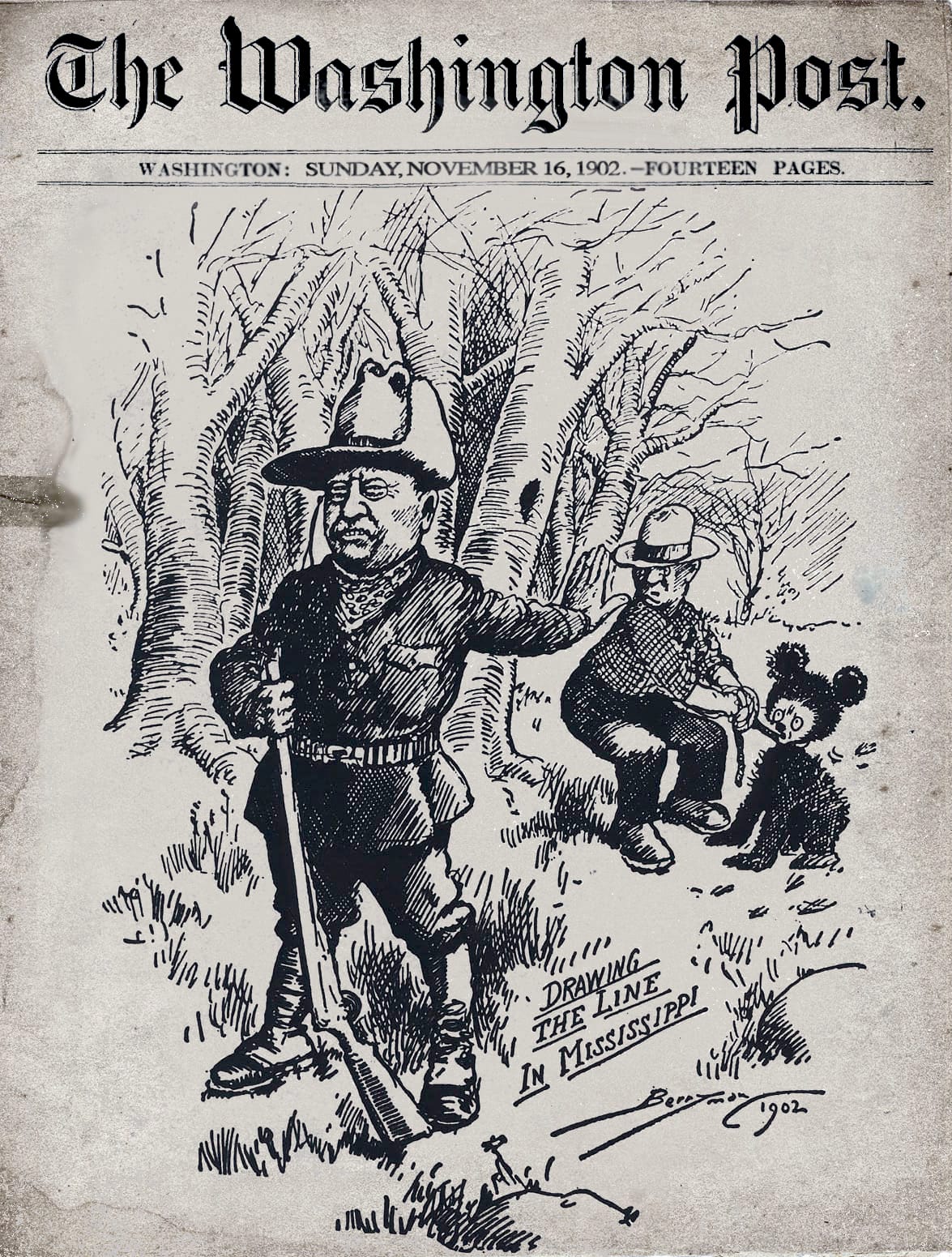
Everyone in my family had a teddy bear when I was growing up. My mother’s, a small Steiff bear known as Zot, somehow flew out the window during a long car trip one summer. We (children, at least) were devastated. Zot had a devil-may-care personality, and for a diminutive bear, he had a commanding presence. Indeed, he ruled an entire kingdom, Zotsylvania, which we had mapped.
An identical replacement was found. We clad him in an aqua blue and orange beach shirt that had belonged to Malibu Ken.
My own bear was so big I called him Bear Bear, which evolved into BurBur. Over the years, he lost his eyes (they were replaced at my mother’s bear hospital), then his fur, so we put him in a onesie. He was around for decades, but he didn’t outlast Zot.
These bears were parts of the family, of our tribal mythos. They played roles in the real and pretend stories we told. I got BurBur for my sixth birthday, and by the time I was nine and in fourth grade, I developed a corollary passion for Theodore Roosevelt.
The first teddy bears came to be after a Black outdoorsman named Holt Collier took President Teddy Roosevelt hunting in Mississippi in 1902. Collier trapped a bear and tied him to a tree for the president to shoot; Roosevelt refused. Political cartoons followed (but is that Collier in the one below? I think not), and the teddy bear was born. I collected memorabilia and put it in a special Teddy Roosevelt box, which I painted blue and green. He was my hero.
“Plush” describes a child’s imagination – rich, sumptuous, abundant. The exhibition “Plush” at Montserrat Gallery, Montserrat College of Art, revolves around stuffed toys. The show nods to the late daddy of art stuffie assemblages, Mike Kelley, who began working with plush toys in the 1980s, aiming to skewer commodity culture. His viewers, though, thought he was addressing trauma – and specifically, his own.
He realized, he told Art 21 in 2005. “I have to make this about my abuse. About everybody’s abuse. This is our shared culture.”
Nineteen years later, nothing has changed – and everything has. Commodity culture is on steroids. Past trauma is out of the closet; contemporary art doesn’t merely expose old hurts; it seeks to soothe and heal them. Cuddly toys offer a deep well of personal and cultural touch points, and the artists in “Plush” plunge right in.
Keep reading with a 7-day free trial
Subscribe to Ocean in a drop to keep reading this post and get 7 days of free access to the full post archives.




